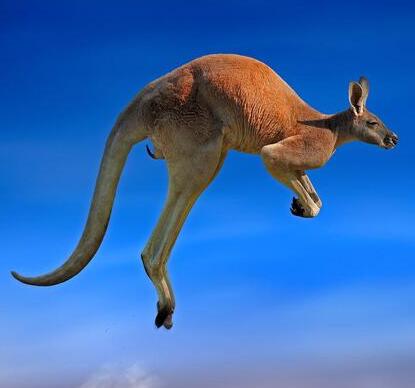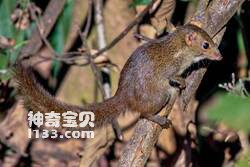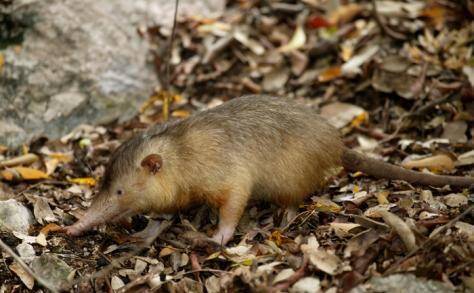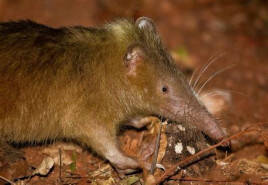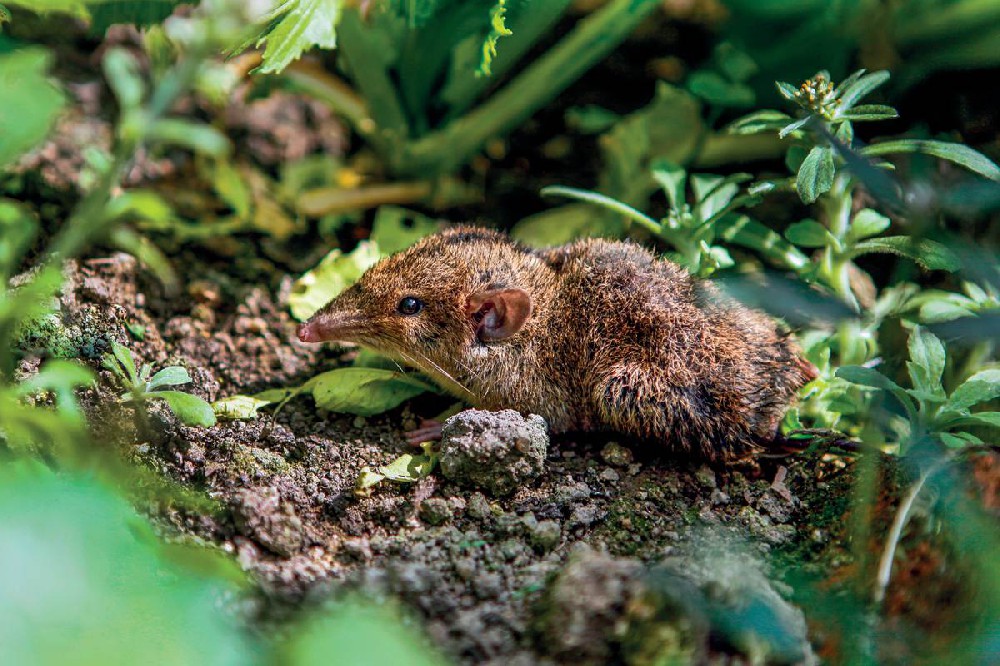Erinaceus europaeus
IUCN
LCBasic Information
Scientific classification
- name:Erinaceus europaeus
- Scientific Name:rinaceus,Prickly pig, hedgehog, hedgeho
- Outline:Eulipotyphla
- Family:Erinaceinae Erinaceidae Eulipotyphla
Vital signs
- length:10—130cm
- Weight:600 -1500 g
- lifetime:8—10years
Feature
Hedgehogs hibernate in late autumn and do not wake up until the temperature is warm enough in the spring of the following year. Interestingly, hedgehogs like to snore, and the sound of their snoring is similar to that of humans.
Behavioral characteristics: Hedgehogs are nocturnal, alert, and irritable. During the day, they usually hide in ambush in concealed places and wait until night to become active to look for food. When they feel danger, hedgehogs will roll up into a ball to defend and protect themselves.
As nocturnal animals, they like to build nests and rest in simple environments such as under the woods, rice fields, bushes, and grass, which can provide sufficient shelter and protection.
Reproduction behavior: The breeding time of hedgehogs is mainly from April to September. Generally, the baby hedgehogs do not have bristles when they are born, but the bristles will grow within a few hours. The number of cubs of hedgehogs is usually between 1 and 6. The mother hedgehog
Distribution and Habitat
Distribution in the world
Hedgehog species are widely distributed, but there is a clear regional distribution between different species, mainly distributed in Europe and Asia. Europe is mainly distributed in European hedgehogs and Eastern European hedgehogs, while Asia is mainly distributed in Northeastern hedgehogs, northern white-breasted hedgehogs and some European hedgehogs.
The northern white-breasted hedgehog is mainly distributed in Europe and Russia, such as Italy, Poland, Romania, Turkey, Ukraine, etc.; the Northeastern hedgehog is mainly distributed in the Russian Far East, North Korea, South Korea and China; the European hedgehog originated in Western Europe and parts of Northern Europe, and is now mainly distributed in Europe and Central Asia, such as Austria, Belgium, Croatia, Czech Republic, Denmark, Russia, China, etc.; the Eastern European hedgehog is distributed in the Mediterranean region, such as Greece, Turkey, Israel, Syria and Lebanon, etc.
Distribution i
Appearance
The body length is usually no more than 30 cm, and the weight is between 600 and 1500 grams. Males are smaller and females are slightly larger. Their backs and sides are covered with short and dense spines, which will stand up when threatened to form a natural shield to protect themselves. Hedgehogs have fur on their heads, tails and abdomens, pointed and long mouths, small ears, short limbs, and 5 toes on both front and back feet, which are suitable for crawling and curling up. Hedgehogs have between 36 and 44 teeth, all with sharp tips, which are very suitable for eating insects and other foods. Hedgehogs have a variety of body colors, usually brown, black, white, cream or a mixture of the above colors. Their spines are non-toxic, and their claws are curved and sharp, which can easily grab and tear food. Hedgehogs have very developed senses of touch and smell, especially their very long noses, which enable them to accurately find food sources.
Details
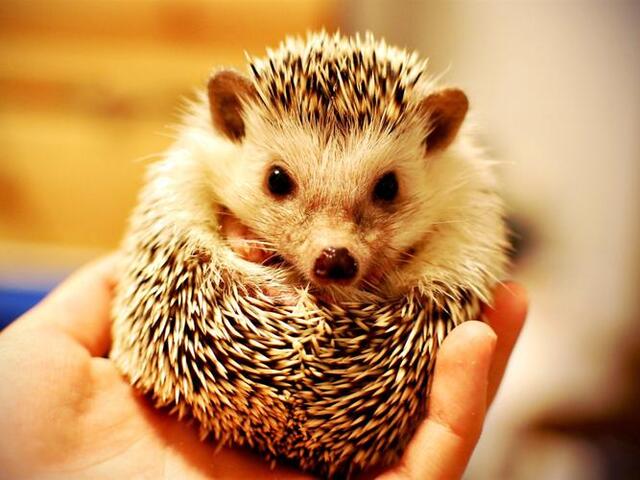
Hedgehog (scientific name: Erinaceus) is the common name for the Erinaceus subfamily, also known as the thorn ball, thorn pig, hedgehog, and hedgehog. It is famous for its protective spines covering its back. When threatened, it will roll itself into a ball to protect itself. It is widely distributed in Europe and northern Asia, and also distributed in northern China and the Yangtze River Basin. They are called "melon-stealing badgers" by the people in the Yangtze River Basin. There are no native hedgehog species surviving in Australia and America, but the extinct genus Erinaceus has been found in North America. Hedgehogs are closely related to the shrew family, and the Erinaceus subfamily may be a transitional species between the two. Hedgehogs can be divided into 5 genera, with a total of 18 species. In the past 15 million years, hedgehogs have undergone little evolutionary change. The body length is between 10 and 130 cm, and the weight range is 600 to 1500 g.
Hedgehogs are nocturnal animals, afraid of light and like darkness. They are active at night about 80% of the time, and their activity range is about 1 to 2 kilometers. They mainly feed on insects and worms. They have defensive quills similar to those of porcupines, but unlike porcupines, these quills cannot fall off. Hedgehogs are resistant to many poisons, but not to pesticides. Their main natural enemies are nocturnal carnivores such as minks, owls and foxes. Hedgehogs hibernate in winter. Hedgehogs are also often kept as pets. The more common species is the African mini hedgehog, which is a hybrid of the four-toed hedgehog and the North African hedgehog.
Distribution and Habitat
World Distribution
Hedgehog species are widely distributed, but there is a clear regional distribution between different species, mainly distributed in Europe and Asia. Europe is mainly distributed in the European hedgehog and the Eastern European hedgehog, while Asia is mainly distributed in the Northeast hedgehog, the Northern White-breasted hedgehog and some European hedgehogs.
The northern white-breasted hedgehog is mainly distributed in Europe and Russia, such as Italy, Poland, Romania, Turkey, Ukraine, etc.; the northeastern hedgehog is mainly distributed in the Russian Far East, North Korea, South Korea and China; the European hedgehog originated in Western Europe and parts of Northern Europe, and is now mainly distributed in Europe and Central Asia, such as Austria, Belgium, Croatia, Czech Republic, Denmark, Russia, China, etc.; the Eastern European hedgehog is distributed in the Mediterranean region, such as Greece, Turkey, Israel, Syria and Lebanon, etc.
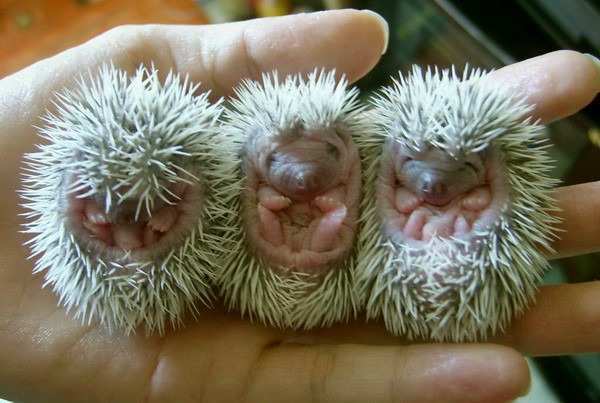
Distribution in China
In China, the genus Erinaceus is mainly distributed in Northeast China, Central China, East China and South China. Because hedgehogs have higher requirements for climate and food conditions, the number of hedgehogs in the south is usually more than that in the north. The northeastern hedgehog is mainly distributed in Heilongjiang, Jilin, Liaoning, Beijing and Tianjin; the European hedgehog is distributed in Northeast China, North China and East China, such as Zhejiang and Fujian.
The hedgehogs introduced into New Zealand have no natural enemies, and their excessive reproduction has gradually caused harm to local species-because the main food "bugs" are not enough, they began to use snails, earthworms and bird eggs as food.
There is often opposition to the eradication of roaming hedgehogs. Since 2003, 690 hedgehogs have been killed in the Outer Hebrides, while animal welfare groups have tried to rescue those that have been rounded up. Since 2008, trapped hedgehogs have been returned to the UK mainland instead of being killed, following a ban on the killing of hedgehogs in 2007.
A 2022 study showed that the number of hedgehogs in rural areas of the UK is declining sharply, down 30-75% from 2000.
Features
Head
The hedgehog has a long, pointed mouth with separated bicuspids and square molars. The hedgehog has 36 to 44 sharp teeth that are useful for preying on insects. The nose and eyes of the hedgehog are black, and the eyes and ears are relatively small, but not longer than the surrounding spines. The head of the hedgehog is covered with long white hair from the top of the head to the muzzle, cheeks, ears and face, and the abdomen is covered with coarse brown or cream hair.
Depending on the species, they are mainly distributed on the top of the head and back, with a number of about 50002.5 cm. Usually, the number of spines on the back of a hedgehog is about 3,000-15,000. They are hard and hollow inside. The lateral support structure inside the spines makes it both light and tough. Each spine is 1.9~2.5 cm long, hard and hollow. Because of the lateral support structure, it is light and tough. Compared with the spines on the back, the hair on the hedgehog's abdomen is soft and slender. Usually, males are smaller and females are slightly larger than males. The claws are curved and sharp, with 4~5 toes. The distinctive feature of the hedgehog is the keratin spines on its back. These spines are non-toxic, and unlike porcupines, these spines are not easy to fall off. However, the spines on immature hedgehogs will eventually fall off and be replaced by adult spines. This process is called "quilling". The spines may also fall off when the hedgehog is under extreme stress or suffers from illness. Hedgehogs come in a variety of colors, usually brown, black, white, cream, or a mixture of these colors. Golden hedgehogs have also been found on Alderney Island in the English Channel Islands.
The direction of the spines is controlled by two muscles on the back. Hedgehogs will curl up in a ball when defending themselves, with the spines facing outward to protect the face, limbs, and abdomen that are not covered with spines. The key to the above measures lies in the number of spines, and some hedgehogs living in the desert have evolved a lighter weight. When faced with a threat, they may be more inclined to flee or actively attack (ramming into the opponent with their bodies), and curling up is only a last resort. Hedgehogs are nocturnal animals, afraid of light and prefer darkness, but some species are also active during the day. During the day, they usually rest in bushes, grass, and under stones, and sometimes dig caves on the ground. Different species have different living habits. The big-eared hedgehogs living in Asia often live in caves left by animals such as turtles, gerbils, foxes, and otters. They remain in a curled position when resting.
Hedgehogs are considered beneficial animals for agriculture and forestry, controlling the number of invertebrates and promoting the spread of seeds.
Hedgehogs have poor visual ability, so they mainly use hearing and smell to perceive prey. Hedgehogs have long and moist noses, and their ears are relatively large relative to their body size. They can use body language and vocal communication, which can be a combination of snorting, nasal sounds, and screams.
Hedgehogs occasionally engage in the physical behavior of "painting spines". When they encounter a new smell, they will lick the source of the smell and then use their tongues to smear the smell onto their spines. Scientists are not sure the purpose of this behavior, but there is speculation that it may help camouflage and that these smears may cause additional damage to predators that are stung. There is a similar behavior in birds, which is called "ant bathing".
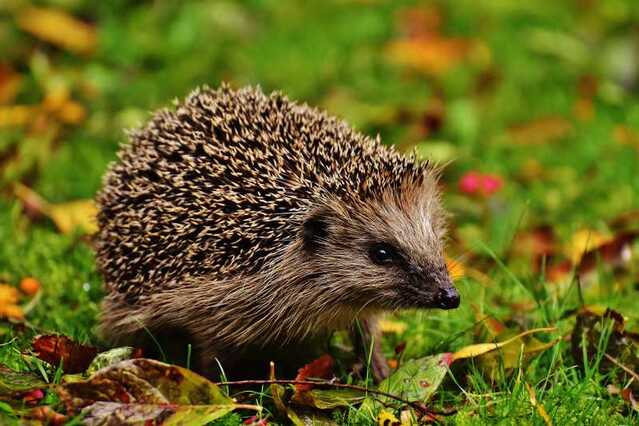
Similar to opossums, mice, and moles, hedgehogs also have a natural immunity to snake venom, which comes from the hericium in their muscles. However, the above snake venom immunity only works under small amounts of venom, and the bite of a viper is still fatal to hedgehogs. Hedgehogs are also one of only four mammals that are immune to alpha-neurotoxins in snake venom, the other three being pigs, honey badgers, and mongooses. They have a mutation in the nicotinic acetylcholine receptor that protects them from blindness caused by alpha-neurotoxins, and this mutation evolved independently.
Sense of smell
The olfactory system of hedgehogs has not been studied in detail. In mammals, the olfactory part of the brain is covered by the neocortex, making it more difficult to study. However, tests have shown that they have electrical activity similar to that of cats.
Diet
Hedgehogs were once classified as obsolete insectivores, but they are omnivores. Their diet includes insects, snails, frogs and toads, small snakes, bird eggs, mushrooms, roots, nuts, fruit, carrion, etc. Hedgehogs that emerge from hibernation in early spring mainly feed on berries. Hedgehogs are sensitive to lactose, so dairy products should not be fed to them as pets.
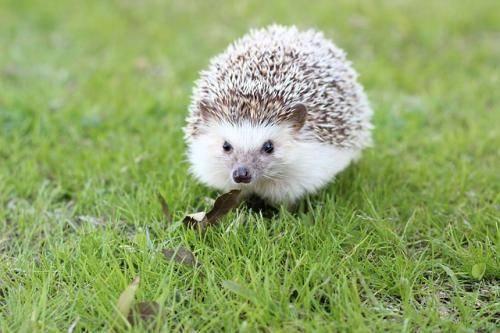
Hibernation
All hedgehogs have the ability to hibernate, usually between September and May of the following year, and the hibernation period is about 6 months. Male hedgehogs wake up from hibernation earlier than female hedgehogs, or hibernate earlier, but they may choose not to hibernate, depending on the ambient temperature, species, and food abundance. Hedgehogs living in hot desert areas may hibernate in summer. During hibernation, the body temperature of hedgehogs can drop to 2°C, and after waking up, the body temperature rises from 2-15°C to 30-35°C in normal state. The size of hedgehogs varies with the season and resource availability. For example, before and after hibernation, the weight of hedgehogs may increase or decrease by about 35% of the average body weight. The survival rate of hedgehogs during hibernation is 60%-100%, but in severe or unusually warm winters, the mortality rate can be as high as 80%.
Reproduction and lifespan
Courtship and mating
Male hedgehogs actively seek mates before entering hibernation or after hibernation. When a male hedgehog finds a suitable female, he will surround her with hisses and grunts. Since hedgehogs are covered in spines, males need to overcome these obstacles to get close to the female. If the female is receptive, she will relax the spines on her back and crouch down on the ground, allowing the male to climb onto her back for mating. The male will then use his teeth to bite the female's shoulders.
To maintain stability. After mating, the male and female hedgehogs will separate. If the female hedgehog does not accept the male, it will erect its spines to prevent the male from approaching. In this case, the male hedgehog will eventually leave and look for other females who are receptive to mating. Female hedgehogs have multiple consecutive estrus cycles during the breeding season and can mate with more than 5 male hedgehogs in the same cycle.

Usually dig caves in low-lying areas, under tree roots, in rock cracks, and on the edge of broad-leaved forests or mixed coniferous and broad-leaved forests. These caves are large in space, have multiple entrances and exits, and are divided into multiple spaces inside, which are connected by passages. Suitable nests usually have good insulation properties and can maintain stable temperature and humidity through thick leaf litter and supporting structures. Hedgehogs will build many types of nests: one is a short-term day nest: a temporary nest used by hedgehogs during the day when they are not hibernating, usually only used for a few days. Day nests are mostly built in thorny or dense vegetation, such as thorns and nettles. They will be abandoned after use and a new day nest will be built. The second is the breeding nest: the nest built by the female hedgehog after giving birth to protect and feed the cubs. The female hedgehog will take care of the cubs in the breeding nest until they grow up and become independent. The third is the hibernation nest: the nest built by the hedgehog before hibernation to spend the winter. Hedgehogs may move between different hibernation nests during hibernation, up to 4 times, and stay for up to 6 months.
Female hedgehogs are sexually mature at around 9-11 months, with a gestation period of 4-6 weeks. Each time, they can produce about 4-7 cubs, and the cubs weigh 3-25 grams. Newborn cubs have about 100 meat thorns. After 2-3 days, the cub's muscle tissue develops enough to keep the spines upright. These white soft thorns are replaced by harder thorns as defensive weapons after about 1.5 days. The cub's eyes will open after 12-15 days, and learn how to roll into a ball for defense. After the cub's milk teeth fall off at about 4 months, the permanent teeth will grow when they are 7-9 weeks old. The weaning period is about 5-6 weeks. At 3-5 weeks of age, the cubs will accompany their mother to forage outside the breeding nest and imitate their mother to learn foraging and nesting behaviors. The cubs are usually completely independent at 4-6 weeks of age, when they weigh 250 grams or more. If the female hedgehog is disturbed by the outside world, she may abandon or even eat her cubs when she is too stressed. Like many animals, adult male hedgehogs sometimes intentionally kill newborn male cubs.
The eyes of newborn hedgehogs are not yet open, and the back is covered with a protective membrane. The spikes are still under the skin and are generally pink. After a few hours after birth, these membranes will dry and fall off, and the white spines will then emerge from the skin. The young hedgehogs open their eyes around 13-24 days old, and their mothers will continue to care for them until they are 4-6 weeks old. Compared to other animals of similar size, hedgehogs have a long lifespan. In the wild, large species of hedgehogs can live 4-7 years (even over 16 years have been recorded), while small species can live 2-4 years (4-7 years in captivity). In contrast, house mice and large rats can live 2 years and 3-5 years respectively. In captivity, the absence of predation and a controlled diet can help them live longer, 8-10 years depending on their size.
The average lifespan of a hedgehog in the wild is 3-5 years, but individuals have been recorded living up to 8 years. In captivity, hedgehogs can live up to 10 years.
Threats
Different species of hedgehogs have different predators: the main predators of hedgehogs living in the forest are birds (especially owls) and martens, while the main predators of small species (such as big-eared hedgehogs) are foxes, wolves and mongooses. Hedgehog bones have been found in the pellets of eagle owls.
In the UK, the main predator facing hedgehogs is the European badger. In areas where badgers are active, the density of hedgehogs in western Europe is low. British animal rescue agencies do not usually release hedgehogs into areas where badgers are known to be active. Badgers can also compete with hedgehogs for food.
A hedgehog with balloon syndrome, whose body swells due to the accumulation of gas under the skin.
Hedgehogs have many diseases similar to humans, such as cancer, fatty liver disease and cardiovascular disease.
Cancer is very common in hedgehogs, the most common of which is squamous cell carcinoma, which spreads quickly from the bones to the organs of the affected hedgehog. Surgery is not usually used to remove the tumor because it may remove too much bone tissue.
It is generally believed that the fatty liver of hedgehogs is caused by their poor diet. Hedgehogs prefer foods high in sugar and fat, but their metabolism is adapted to a diet of low-fat, high-protein insects, so high-sugar and high-fat foods can cause obesity. In addition to fatty liver, this poor diet may also cause heart disease.
Pneumonia is also very common in hedgehogs. Similar to humans, hedgehogs with pneumonia have difficulty breathing and nasal discharge. The bacteria that causes pneumonia in hedgehogs is Bordetella bronchiseptica.
Rarely, hedgehogs can transmit fungal skin diseases to humans or other hedgehogs. This is dermatophytosis caused by Trichophyton erinacei, which belongs to a specific mating group of the dermatophyte fungus Arthroderma benhamiae.
Hedgehogs can also suffer from balloon syndrome, a condition in which the body swells due to air trapped under the skin as a result of injury or infection.
Like other small mammals that live near human settlements, hedgehogs can be hit by vehicles when crossing roads. Hedgehogs are one of the most deadly mammals on the roads in Ireland. From April 2008 to November 2010, 133 hedgehogs were recorded dead from vehicle strikes on two roads (227km and 32.5km in length). In addition, among the 135 hedgehog carcasses collected in Ireland, males were significantly more likely to be killed than females, with the peak of male deaths occurring between May and June. Female deaths only exceeded males in August, with the peak occurring in June and July. It is hypothesized that the peak of hedgehog road deaths is related to their breeding season and subsequent separation from their mates, when they explore their surroundings alone.
Hedgehogs are often kept as pets. The most common pet hedgehog is a hybrid of the four-toed hedgehog (Atelerix albiventris) and the North African hedgehog (A. algirus). This hedgehog is smaller than the Western European hedgehog, so it is sometimes called the African pygmy hedgehog. Other hedgehogs kept as pets include the big-eared hedgehog (Hemiechinus auritus) and the Indian long-eared hedgehog (H. collaris).
In some areas of the United States, such as Hawaii, Georgia, Pennsylvania, and California, it is illegal to keep hedgehogs as pets. In some areas of Canada, special permits are required to keep hedgehogs. In Europe, only in Scandinavia are there restrictions on keeping hedgehogs. Italy prohibits keeping wild hedgehogs as pets.
Domestic hedgehogs may get their heads stuck in paper tubes, especially toilet paper roll cores, and try to run around with them. Keepers call this behavior "tubing", and some even provide thin paper tubes for them to play with. However, to ensure safety, most keepers will cut the paper tubes in advance to prevent the hedgehogs from getting trapped. Interestingly, some hedgehogs will still deliberately trap themselves in paper tubes for hours and refuse to get out.
Edible and medicinal
Hedgehogs have certain medicinal and economic values, but China prohibits the breeding of hedgehogs for the purpose of eating, and only allows breeding for non-edible purposes such as medicine, display, and scientific research. Hedgehogs are used as a food source in many cultures. The ancient Egyptians ate hedgehogs, and some recipes in the medieval diet also listed hedgehog meat as an essential ingredient. Historically, hedgehogs were often used as medicine or as witchcraft items in Eurasia and Africa. The Bedouin in the Arabian Desert considers hedgehog meat as a remedy for rheumatism, arthritis, and even some diseases and disorders caused by tuberculosis. In Morocco, people inhale smoke from burnt hedgehog hair or spikes to treat fever, impotence, or urinary problems. Hedgehog blood is believed to have the effect of treating dermatophytosis, cracked skin, and warts, and people eat hedgehog meat during sacrifices. To this day, the Roma (also known as the Gypsies) still retain the custom of eating hedgehog meat. They usually choose to steam or roast hedgehogs, and also extract the blood and fat of hedgehogs for medicinal purposes.
In 1981, British Philip Lewis developed hedgehog-flavored potato chips, the flavor of which was based on the seasoning added by the Roma when roasting hedgehog meat. However, because the chips do not actually contain any hedgehog ingredients, the British Fair Trading Office required them to be renamed "hedgehog-flavored potato chips."
A methicillin-resistant Staphylococcus aureus that is resistant to almost all penicillin antibiotics has been found in hedgehogs in Denmark and Sweden. Research has shown that this drug-resistant gene existed in wild hedgehogs long before penicillin and methicillin were marketed. A fungus in hedgehogs can produce antibiotics similar to penicillin, which has caused the bacteria carried by hedgehogs to evolve resistance.
Hedgehog classification | |
Hedgehogs (subfamily Erinaceinae) are divided into five genera containing 18 species: | |
非洲猬属 (Atelerix) | 四趾刺猬 (Atelerix albiventris) |
北非刺猬 (Atelerix algirus) | |
南非刺猬 (Atelerix frontalis) | |
索马里刺猬 (Atelerix sclateri) | |
猬属 (Erinaceus) | 东北刺猬(Erinaceus amurensis) |
西欧刺猬(Erinaceus europaeus) | |
南白胸刺猬(Erinaceus concolor) | |
北白胸刺猬(Erinaceus roumanicus) | |
大耳猬属 (Hemiechinus) | 长耳刺猬/大耳猬(Hemiechinus auritus) |
印度长耳刺猬(Hemiechinus collaris) | |
林猬属 (Mesechinus) | 达乌尔猬 (Mesechinus dauuricus) |
林猬 (Mesechinus hughi) | |
王氏林猬 (Mesechinus wangi) | |
小齿猬(Mesechinus miodon) | |
沙漠猬属(Paraechinus) | |
沙漠猬(Paraechinus aethiopicus) | |
勃兰特猬(Paraechinus hypomelas) | |
印度猬(Paraechinus micropus) | |
裸腹猬(Paraechinus nudiventris) | |
沙漠猬属(Paraechinus) | 沙漠猬(Paraechinus aethiopicus) |
勃兰特猬(Paraechinus hypomelas) | |
印度猬(Paraechinus micropus) | |
裸腹猬(Paraechinus nudiventris) | |

